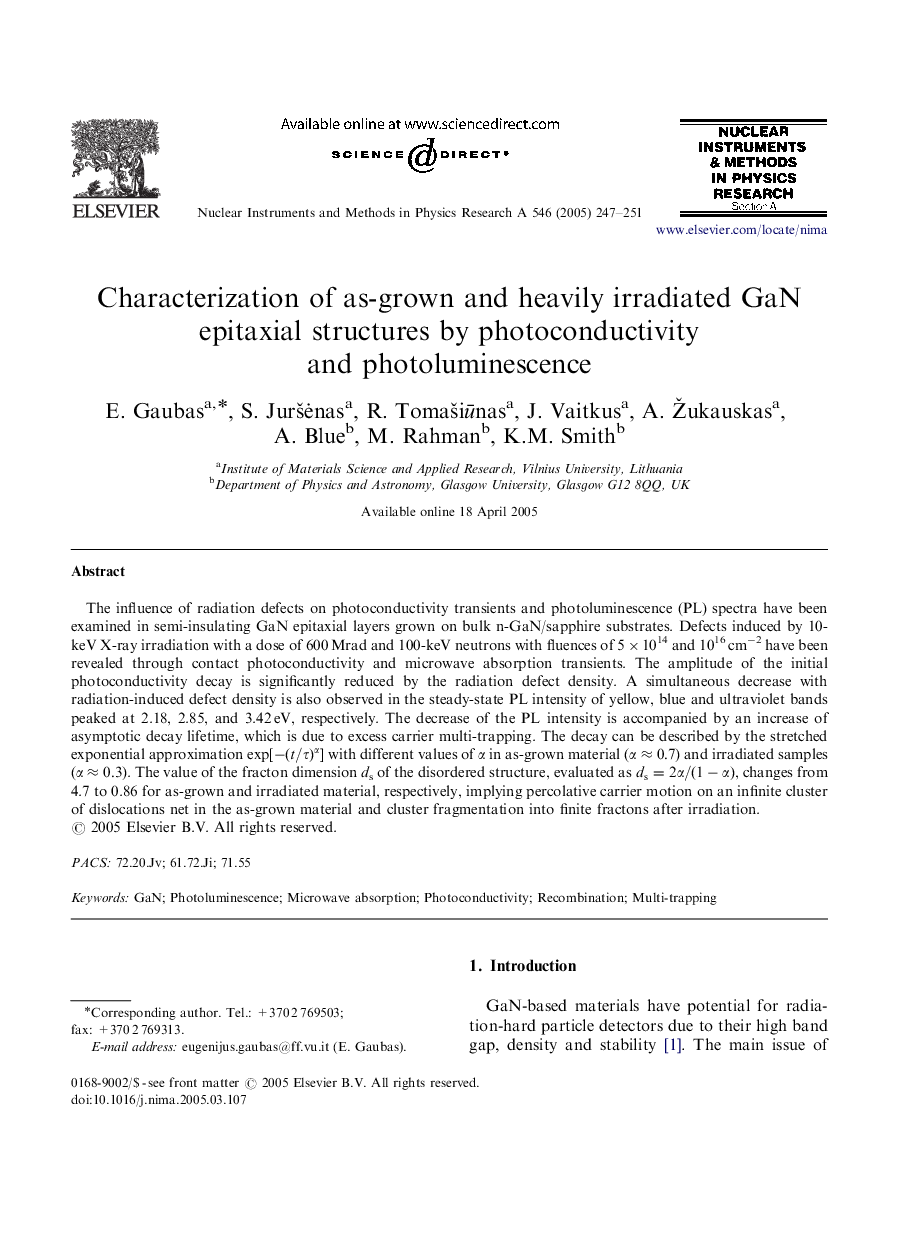| Article ID | Journal | Published Year | Pages | File Type |
|---|---|---|---|---|
| 9845361 | Nuclear Instruments and Methods in Physics Research Section A: Accelerators, Spectrometers, Detectors and Associated Equipment | 2005 | 5 Pages |
Abstract
The influence of radiation defects on photoconductivity transients and photoluminescence (PL) spectra have been examined in semi-insulating GaN epitaxial layers grown on bulk n-GaN/sapphire substrates. Defects induced by 10-keV X-ray irradiation with a dose of 600 Mrad and 100-keV neutrons with fluences of 5Ã1014 and 1016 cmâ2 have been revealed through contact photoconductivity and microwave absorption transients. The amplitude of the initial photoconductivity decay is significantly reduced by the radiation defect density. A simultaneous decrease with radiation-induced defect density is also observed in the steady-state PL intensity of yellow, blue and ultraviolet bands peaked at 2.18, 2.85, and 3.42 eV, respectively. The decrease of the PL intensity is accompanied by an increase of asymptotic decay lifetime, which is due to excess carrier multi-trapping. The decay can be described by the stretched exponential approximation exp[-(t/Ï)α] with different values of α in as-grown material (αâ0.7) and irradiated samples (αâ0.3). The value of the fracton dimension ds of the disordered structure, evaluated as ds=2α/(1-α), changes from 4.7 to 0.86 for as-grown and irradiated material, respectively, implying percolative carrier motion on an infinite cluster of dislocations net in the as-grown material and cluster fragmentation into finite fractons after irradiation.
Keywords
Related Topics
Physical Sciences and Engineering
Physics and Astronomy
Instrumentation
Authors
E. Gaubas, S. JurÅ¡Änas, R. TomaÅ¡iÅ«nas, J. Vaitkus, A. Žukauskas, A. Blue, M. Rahman, K.M. Smith,
